Orange tabby cats are some of the most beloved and iconic feline companions. With their vibrant orange coats and unique tabby patterns, they capture the hearts of cat lovers everywhere. But what exactly is an orange tabby cat? In this comprehensive guide, we will delve into the world of orange tabbies, exploring their origins, coat patterns, genetics, personality traits, and more. So, let’s embark on this feline adventure and discover everything you need to know about orange tabby cats.
1. Introduction to Orange Tabby Cats
Orange tabby cats, also known as ginger or marmalade cats, are cherished for their beautiful, vibrant coats. However, it’s important to note that the term “tabby” doesn’t refer to a specific breed of cat but rather a coat pattern. Tabby patterns can be found in various colors, but the orange tabby is particularly striking. These cats exhibit a combination of stripes, spots, and swirls on their bodies, making them unique and instantly recognizable.
2. Understanding Tabby Patterns
Tabby patterns come in five different varieties: mackerel, classic, spotted, ticked, and patched. Each pattern has its own distinct characteristics, adding to the diversity and charm of orange tabby cats.
Mackerel Orange Tabby
The mackerel tabby is perhaps the most iconic representation of an orange tabby cat. This pattern features narrow, evenly spaced stripes that resemble a fish skeleton. The stripes run parallel down the length of the cat’s body, giving them a tiger-like appearance.
Classic Orange Tabby
Classic tabbies have bold, swirling patterns on their backs, resembling marbling or a bullseye. These cats exhibit a random series of dark and light orange swirls, creating a beautiful and distinctive pattern.
Spotted Orange Tabby
Spotted tabbies, as the name suggests, have bright spots of varying sizes all over their sides. These spots can sometimes be difficult to distinguish from the mackerel tabby pattern. It is not yet clear whether spotted tabbies developed from mackerel tabbies or if they have different genetic origins.
Ticked Orange Tabby
Ticked tabbies have a unique pattern that can be challenging to identify as a tabby at first glance. These cats may not display obvious stripes or spots, but they possess subtle markings on their forehead and agouti fur. Some examples of ticked tabby breeds include the Somali and Abyssinian.
Bi-Color Orange Tabby
While traditional tabbies often exhibit a solid orange tabby pattern all over their bodies, bi-color orange tabbies feature a combination of tabby patches that are darker in coloration than the rest of the body. This bi-color pattern adds another layer of visual interest to the already captivating orange tabby coat.
3. Genetics of Orange Tabby Cats
The genetics behind orange tabby cats are fascinating. Coat color and pattern in cats are carried on the X chromosome, and male cats only need to inherit one copy of the orange gene to display orange coloration. This is why most orange tabby cats are male, as females need two copies of the gene to exhibit the same coloring. The genetics of tabby patterns depend on whether the cat inherits a dominant or recessive agouti gene, which determines the visibility of stripes or spots.
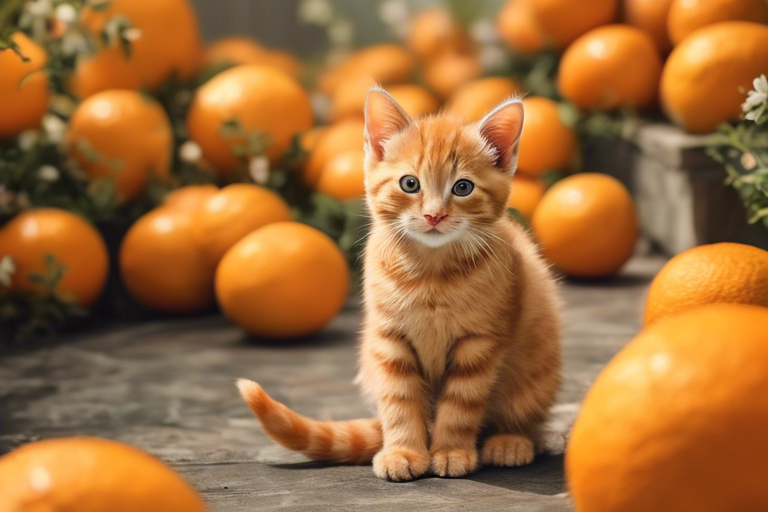
4. Availability in Different Breeds
Orange tabby cats can be found in various breeds, each with its own distinct traits and characteristics. Let’s explore some of the breeds where orange tabby cats are commonly found.
Persian
Persian cats, known for their luxurious long coats and sweet personalities, can also be found in orange tabby variations. These regal felines with their distinctive flat faces and dense fur make for stunning orange tabbies.
Munchkin
Munchkin cats, famous for their short legs, come in a wide range of coat colors and patterns, including orange tabby. Their playful and sociable nature, combined with their unique appearance, makes them a popular choice among cat enthusiasts.
American Bobtail
American Bobtail cats have a wild and rugged appearance, with their distinctive bobbed tails and muscular bodies. They are known for their friendly and intelligent personalities, and some of them showcase the beautiful orange tabby pattern.
British Shorthair
The British Shorthair breed is renowned for its round faces, sturdy build, and dense coats. These cats are often associated with the Cheshire Cat from “Alice in Wonderland.” Orange tabby British Shorthairs are particularly charming with their combination of a stocky physique and vibrant coat.
Bengal
Bengal cats are known for their striking coat patterns that resemble those of their wild ancestors, the Asian leopard cats. While the most common Bengal pattern is the rosetted or spotted variety, orange tabby Bengals also exist, adding a touch of warmth to their wild appearance.
Maine Coon
Maine Coon cats, famous for their large size and tufted ears, come in a variety of coat colors and patterns, including orange tabby. These gentle giants have loving and sociable personalities, making them wonderful companions.
Abyssinian
Abyssinian cats, originating from Egypt, are known for their short, ticked coats and playful personalities. While their coats are usually a warm reddish-brown, it is possible to find orange tabby Abyssinians with their characteristic agouti fur.
Egyptian Mau
The Egyptian Mau is an ancient breed that traces its roots back to ancient Egypt. These cats have a striking spotted coat pattern, and some individuals exhibit the beautiful orange tabby coloration. Egyptian Maus are known for their athleticism and loyalty.
5. Physical Characteristics of Orange Tabby Cats
In addition to their vibrant orange coats and distinctive tabby patterns, orange tabby cats possess certain physical characteristics that set them apart. Let’s explore these features that contribute to their unique charm.
M-Shaped Marking
One of the most recognizable features of orange tabby cats is the M-shaped marking on their foreheads. This marking is a natural occurrence and is often associated with the word “Mau,” which means cat in Egyptian. The M-shaped marking is particularly prominent in mackerel or classic tabby cats.
White/Dark Lining Around Eyes
Orange tabby cats often have a faint white or dark line around their eyes. This feature develops early on and becomes more pronounced as the cat grows older.
Pigmented Paws & Lips
If you observe an orange tabby closely, you may notice that their paws and lips have a signature pigment that matches their coat color. This coloration adds to their overall aesthetic appeal and helps define their facial features.
Pencil Lines
Pencil-like lines, either yellow or white in color, can be seen around the body and face of some orange tabby cats. While not all orange tabbies exhibit this characteristic, it is a striking feature that adds to their visual appeal.
Pale Coloring on Chin & Belly
Orange tabby cats often have pale coloring on their chin and belly. The most common color is white, but depending on the cat’s breed, the chin and belly may display shades of orange, yellow, or other colors.
6. Personality and Temperament
Orange tabby cats are known for their friendly and affectionate personalities. While it’s important to remember that each cat is unique, certain traits and behaviors are commonly associated with orange tabbies. Here are some general characteristics often attributed to these delightful felines:
- Playfulness: Orange tabbies are often playful and enjoy interactive toys and games that stimulate their minds and bodies.
- Sociability: Many orange tabby cats are social and enjoy being around their human companions. They are often described as “people cats” and may seek out attention and affection.
- Intelligence: Orange tabbies are known for their intelligence and ability to learn tricks and commands. They are quick learners and thrive in environments that provide mental stimulation.
- Vocalization: Orange tabbies are often more vocal compared to other cats. They may engage in conversations with their owners, expressing themselves through a range of meows, purrs, and chirps.
- Tolerant: Orange tabbies are generally tolerant of children and other pets, making them suitable for families with multiple pets or young children.
- Curiosity: These cats have a natural curiosity and enjoy exploring their surroundings. They may exhibit an adventurous spirit and investigate every nook and cranny in the household.
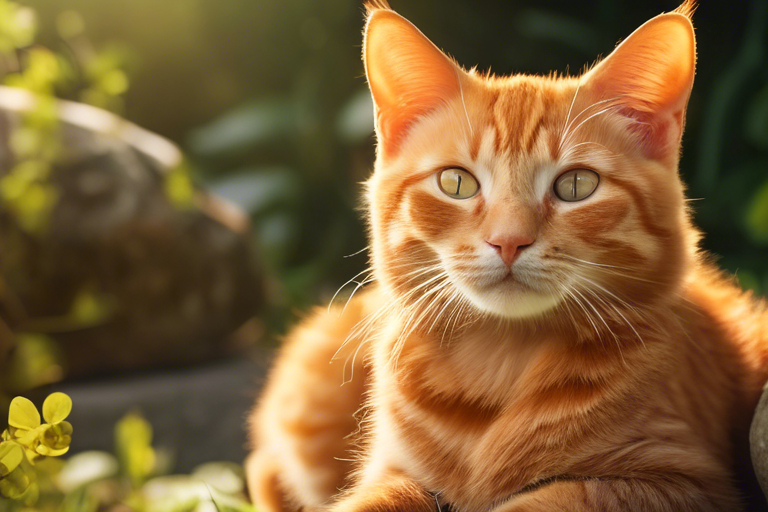
7. Fun Facts About Orange Tabby Cats
Orange tabby cats have captured the hearts of many cat lovers throughout history. Here are some fun and fascinating facts about these delightful felines:
- Nicknames: Orange tabby cats are often affectionately referred to as “ginger” or “marmalade” cats. These nicknames have been used for many years to differentiate traditional tabbies from orange tabbies.
- Male Dominance: Most orange tabby cats are male due to their unique genetics. The gene for coat color is carried on the X chromosome, and male cats need only inherit one copy, while females need two. This results in approximately 80% of orange tabbies being male.
- Dominant Coat Color: The gene for orange coat color is dominant over most other coat colors, except for white. This may explain why many bi-color orange tabbies exhibit white as their second color.
- Freckles: Orange tabby cats often have dark freckles on their nose and mouth. These markings tend to develop by the age of two and are a common feature in tabbies.
- Personality Link: According to National Geographic, coat color may be somewhat linked to personality traits in cats. Orange tabbies are often described as more talkative and outgoing compared to other cats.
8. Male vs. Female Orange Tabby Cats
One question that often arises is whether there is a difference between male and female orange tabby cats. While both genders can exhibit the orange tabby coat pattern, there is a higher prevalence of male orange tabbies. This is due to the genetics behind coat color inheritance. Female cats require two X chromosomes to be female, and therefore, they need to inherit two copies of the orange gene to display the orange tabby coloring. In contrast, male cats only need one copy of the gene to exhibit the same coloring. As a result, approximately 80% of orange tabbies are male.
9. Origins and History of Orange Tabby Cats
The origins of orange tabby cats have been a subject of debate among experts. It is believed that the orange tabby pattern originated from ancient Egypt or Ethiopia, as the Egyptian Mau and Abyssinian cats, which have the orange gene, trace their roots back to these regions. However, the exact origins of orange tabbies beyond these documented instances remain unclear. It is possible that civilizations predating ancient Egypt also had cats with similar coloring and patterns, but the historical evidence is limited.
10. Caring for Orange Tabby Cats
Caring for orange tabby cats involves providing them with the same level of care and attention as any other cat. Here are some essential aspects to consider:
Diet and Nutrition
Maintaining a balanced and nutritious diet is crucial for the overall health and well-being of orange tabby cats. Consult with your veterinarian to determine the appropriate type and amount of food for your cat, considering factors such as age, weight, and any specific dietary requirements.
Grooming
Regular grooming is essential to keep your orange tabby’s coat in good condition. Brushing their fur helps remove loose hair, reduces the risk of matting, and stimulates blood circulation. Additionally, periodic nail trims, dental care, and ear cleaning are essential parts of your cat’s grooming routine.
Exercise and Playtime
Engaging your orange tabby in regular exercise and play sessions is vital for their physical and mental stimulation. Provide toys, scratching posts, and interactive playtime to keep them active and entertained.
Health Considerations
Like all cats, orange tabbies are susceptible to certain health conditions. Regular veterinary check-ups, vaccinations, and preventive treatments for parasites are essential to ensure their well-being. Be aware of any breed-specific health concerns associated with the particular breed of orange tabby you have.
11. Famous Orange Tabby Cats
Throughout history, orange tabby cats have made their mark in popular culture and the hearts of millions. Let’s explore some of the most famous orange tabby cats:
Garfield
Garfield, the lasagna-loving cat, made his debut in American culture in 1978. Created by Jim Davis, Garfield is known for his witty humor, love for food, and disdain for Mondays. This iconic orange tabby holds the Guinness World Record for being the most syndicated comic strip.
Morris
Morris, the beloved mascot for 9Lives cat food, first appeared on television screens in 1968. With his charming personality and striking orange tabby appearance, Morris captured the hearts of cat lovers worldwide.
Milo
Milo, the lovable orange tabby from the film “Milo and Otis,” charmed audiences with his adventurous spirit and heartwarming friendship with his canine companion. This delightful film brought the magic of orange tabbies to the big screen.
12. Conclusion
Orange tabby cats are truly special creatures, captivating us with their vibrant coats, unique tabby patterns, and charming personalities. Whether they are mackerel, classic, spotted, ticked, or bi-color, these feline companions bring joy, love, and warmth to our lives. Understanding their genetics, physical characteristics, and care requirements allows us to provide the best possible environment for their well-being. So, if you’re lucky enough to share your life with an orange tabby, cherish every moment and enjoy the delightful presence of these extraordinary feline friends.

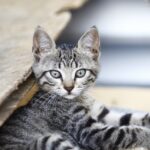

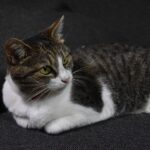
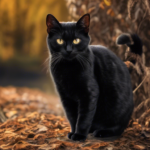
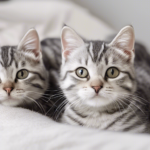
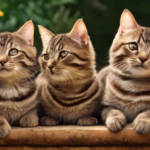
2 thoughts on “Orange Tabby Cats: Everything You Need to Know”